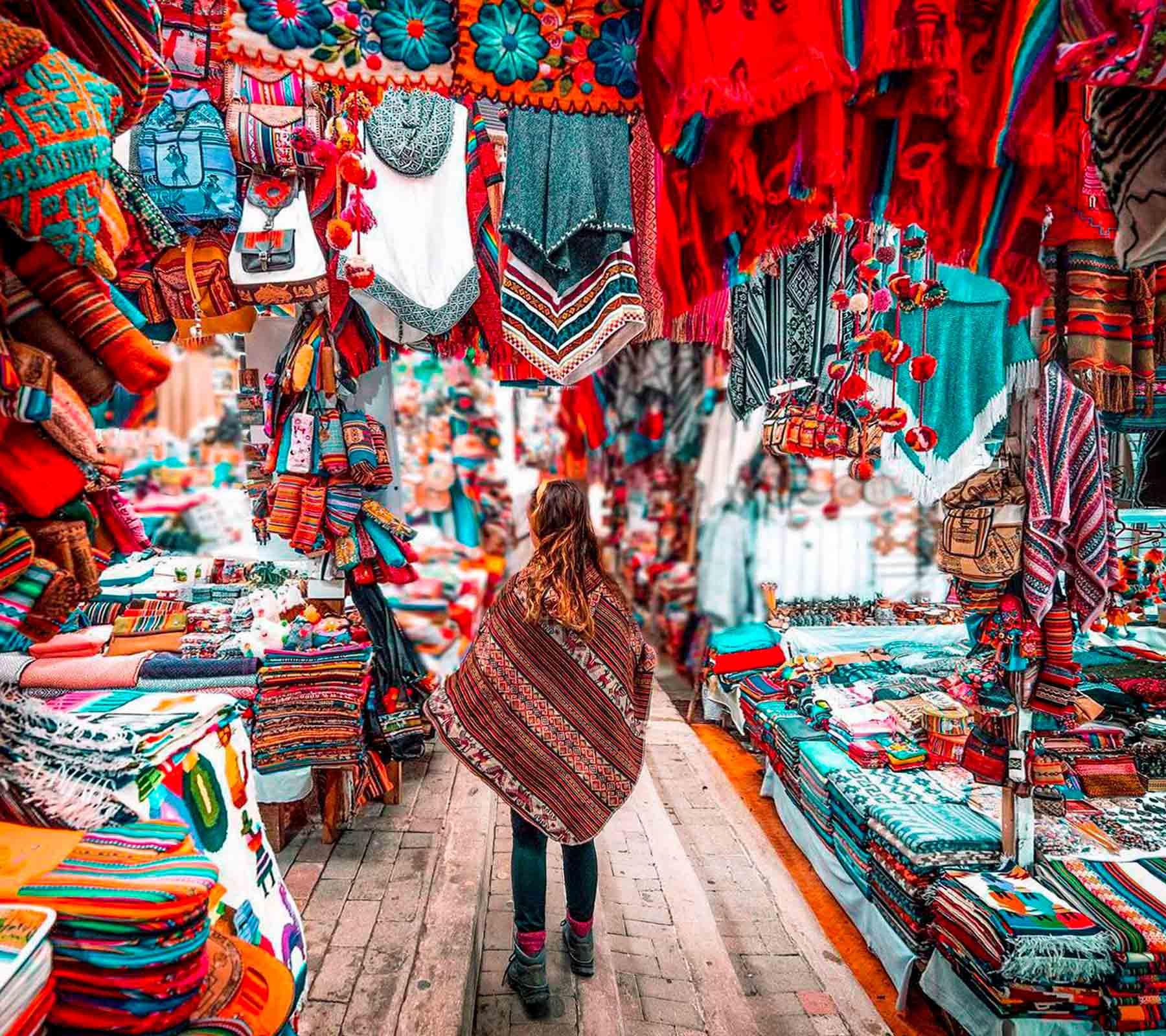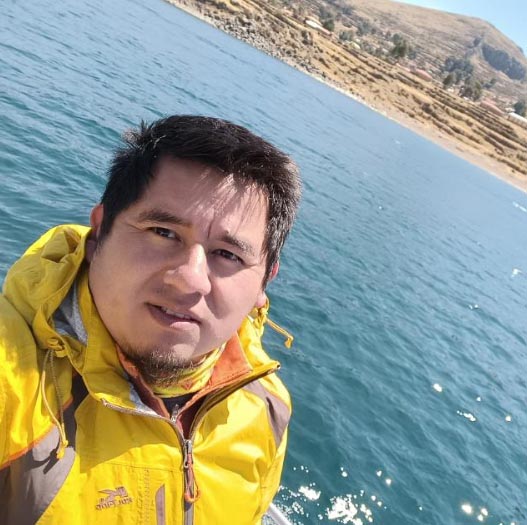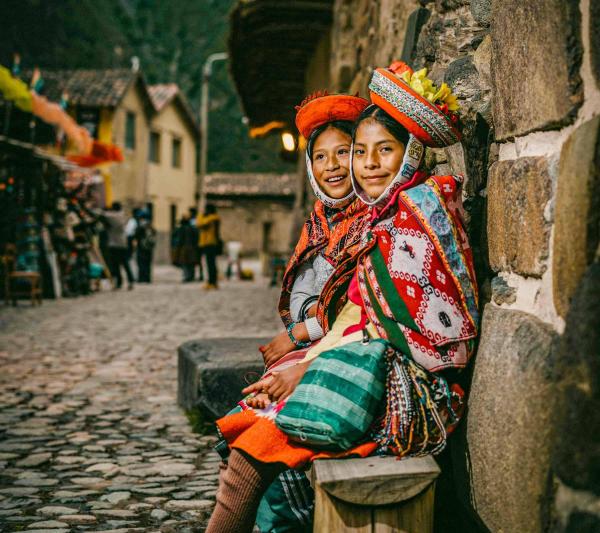Ollantaytambo is one of the most important towns in the Sacred Valley of the Incas in Cusco. It is the only place that preserves its ancient Inca urban design. Because it is an obligatory step before reaching Machu Picchu, it is very visited. However, 'Ollanta' has its own charms. The main one of all are its Inca archaeological remains.
Ollantaytambo was a strategic military, religious and agricultural center that still dazzles with its stone platforms and its imposing buildings more than four meters high. In this place, Manco Inca faced the Spanish troops of Hernando Pizarro and was victorious. Located 80 km from the city of Cusco - in the province of Urubamba - and 40 km from Machu Picchu, this archaeological zone preserves over time its houses, streets and canals from the Tahuantinsuyo era.
It is a place that envelops you with its magic and mystery. It is believed that it was a change of refuge for Inca royalty and nobility. The fortress was built with huge rocks brought from a quarry 6 kilometers away, near the Urubamba River. To transport these stones, the Incas had to divert the entire water channel around them, in a masterful work of engineering and wisdom.
History
According to researchers, this complex has its origins in the Aymara culture and its name comes from the word Ullanwtawi, which means "seeing down" or "viewpoint." Later, the Quechua language became predominant in this area and the name was changed to Ullantay. When a tambo or accommodation was built on the esplanade of the place, the name Ullantay Tampu was adopted, later resulting in Ollantaytambo, as it is currently known.
The construction of Ollantaytambo, like the sanctuary of Machu Picchu, dates back to the period of greatest expansion of the Inca Empire, which in turn coincides with the government of the Inca Pachacutec. After the arrival of the Spanish, the fortress served as a refuge for Manco Inca, who led the resistance to the conquerors. In 1536, Spanish troops commanded by Hernando Pizarro faced the army of Manco Inca in Ollantaytambo. After a bloody battle and tenacious resistance, the Spanish had to withdraw.
Origin of Ollantaytambo
The town of Ollantaytambo had its origins as such in the Pachacutec era (1418 – 1471). Although it was not the first construction, it could be said that it was during the Inca kingdom where the place experienced a drastic expansion. In those times, Ollantaytambo served as an access control point for the Sacred Valley. Furthermore, it is here that corn could be domesticated for the first time for cultivation in abundance, using the fertile slopes of the Urubamba River valley.
There is a point where the ditches look like they were built with light in mind, as they always look so bright and shiny.
Furthermore, Ollantaytambo was the place where the Incas had their greatest triumph against the Spanish at the time of the conquest. Manco Inca, leading the rebel Inca army, manages to slow the advance of the Spanish cavalry by flooding the fields around the walled terraces of Ollantaytambo.
Not only did it serve as a strategic location for monitoring the nearby valleys, but it was also a strategic military point that was very well used. From this arises the idea that for the Incas nothing was done by pure chance.
Who built Ollantaytambo?
Although Pachacútec was in charge of bringing Ollantaytambo to its maximum splendor, the constructions date back long before the time of the Incas. In the city and its surroundings, signs of settlements of the Huari civilization (AD 600 – 1000) were found, such as the example of the Pumamarca fortress, a military citadel that controlled access to Ollantaytambo. This fortress could be reached via the well-known Inca Trail.
Other versions claim that the town is even 3,500 years old.
It could be said that a lot has been built on top of the place, including the Incas, and that in turn an already existing city has been extended.
Ollantaytambo today
Ollantaytambo is not a town in ruins as it might seem from what has been said above, but quite the opposite. It is divided in two by the Patacancha stream. On the one hand, we have the Qosqo Ayllu: it comprises the eastern portion and contains the central plaza and four streets parallel to the Patacancha stream. On the other hand, we have the Araqama Ayllu: it comprises the western area and its various archaeological points stand out. According to the results of the 2017 National Census, the population of the Ollantaytambo district is 10,165 inhabitants and it is said that this is a smaller amount than it had in the time of the Incas.
A masterpiece of engineering and architecture
The Ollantaytambo temple is an impressive architectural complex. It is located at 2792 meters above sea level and is 3500 years old. It is believed that its construction was oriented towards the city of Cusco, as its architects sought to defend themselves from the Incas. Likewise, they chose this area because of the underground water channels that they discovered at great depth. The builders of Ollantaytambo designed an aqueduct system that is currently still fully operational. Each fountain was carved into rock with its own characteristics and designs. The best known and considered the most beautiful is the Ñusta Fountain, made of a single stone and decorated in the shape of a portal.
In the fortress, we can find six enormous rectangular stone blocks that belong to the Temple of the Sun. They are located in one of the highest areas of the place and appear to be a construction that has been left unfinished. The largest monolith measures more than four meters high and two meters wide. The construction has a plaza in which a large block has been placed with perfect edges, which, in turn, are oriented towards the cardinal points. The streets are divided into straight lines along which water used to flow through the canals.
One of the most surprising details about Ollantaytambo is that the rocks found in the complex are perfectly polished, have impeccable cuts and are intact, which means that the builders were able to lift the stones and transport them without them suffering damage. some. Which is quite a feat, since the fortress is built on a very high slope. Without a doubt, Ollantaytambo is one of the great wonders of Inca architecture that to this day generates doubts and questions, many of them still without answers.
How to get?
From Cusco you can get there in two ways: by taxi and by train, after approximately an hour of travel. Opening hours are from 7 am to 6 pm and there are guided group tours that can be requested at the entrance to the archaeological site. The tour of the ruins lasts approximately two hours.
It is recommended to travel from Cusco to Ollantaytambo by car. There are three access routes:
Cusco – Chinchero – Urubamba – Ollantaytambo (81 kilometers)
Cusco – Piscac – Calca – Urubamba – Ollantaytambo (96 kilometers)
Cusco – Anta – Huarocondo – Pachar – Ollantaytambo (70 kilometers)
That last one is the fastest, but be careful that it usually has landslides in the rainy season.
There have been several civilizations that have passed through these lands. Therefore, do not miss the opportunity to discover every little point in its history. The town of Ollantaytambo awaits you with open arms!
Ollantaytambo archaeological complex
The archaeological complex of Ollantaytambo was a military, religious and agricultural center. This fabulous architectural setting is interesting for the size, originality and detail of its structures.
During the Spanish invasion in the 16th century it functioned as a fortress for the army of Manco Inca who faced the army of Hernando Pizarro.
As a result, many buildings were destroyed. However, today you can still see imposing buildings such as the Temple of the Sun, the 10 Hornacinas Enclosure, the Ñusta Baths and more.
What to see at the Ollantaytambo archaeological site?
Ollantaytambo has beautiful Inca lithic structures. Because it was the scene of tough battles between rebellious Incas and the Spanish in 1537, many of its buildings are damaged or destroyed. Even so, the ruins continue to preserve the magic and history of many centuries ago.
The Royal House of the Sun
The Real Casa del Sol is made up of 17 very large superimposed terraces oriented towards the main square of the town.
Choqana Fort
Choqana is a Quechua word that means “where it is knocked down or thrown.” It is located 2 kilometers from Ollantaytambo. It served as an administrative center, checkpoint and fort.
Mañay Raqay Square or 'K'uychipunku'
Its name means 'Square of petitions' in Quechua. It is located on the right side of the Patakancha stream next to the entrance door of the archaeological site. Its walls have many openings that are believed to be doors.
The temple of the Sun
This impressive monolith made up of 6 pieces is almost completely destroyed. However, it is still one of the most beautiful pieces in Ollantaytambo. The 6 enormous rocks that form the western wall fit together with incredible precision.
The Monumental Front and the 10 Niches Enclosure
This construction is located at the end of the upper group of platforms. Its walls are made up of two stone canvases polished with great precision. This enclosure was damaged during the Spanish conquest. It is one of the most popular in 'Ollanta'.
The Ñusta Bath
It is a beautiful fountain with 3 water outlets sculpted inside. They are known as liturgical sources and could be found in the main cities of the Inca Empire.
The Platforms
In Ollantaytambo we find groups of parallel platforms. They have parameters inclined towards the hill with steps that emerge embedded in its walls. They can be seen from a long distance.
How to buy the Tourist Ticket to enter Ollantaytambo?
Entrance to Ollantaytambo is included in the Cusco Tourist Ticket. This ticket includes access to this and other tourist attractions such as: Pisac, Sacsayhuaman and Coricancha.
The Cusco Tourist Ticket can be purchased at authorized offices in Cusco.
Avenida El Sol 103, Cusco. (Tourist Galleries of. 101).
At the door of the same archaeological sites (Sacsayhuaman, Coricancha, Ollantaytambo).
You can choose to buy the 'full' or 'partial' Tourist Ticket. Thus, you can choose a certain group of places that you want to visit. Please note that purchasing tickets for each site separately represents a higher expense.
Opening hours for ‘Archaeological Site of Ollantaytambo’: 7 a.m. to 7 p.m. to 6 p.m. (Every day of the week).
Note: Try to arrive early in the morning. This way you will avoid the tourist groups that start arriving at 11 a.m.
How to visit Ollantaytambo on a tour?
The Inca citadel of Ollantaytambo is one of the main tourist attractions of the Sacred Valley of the Incas.
To visit it with a tour, it is best to choose the Sacred Valley of the Incas Full Day tour. The tour includes a visit to the archaeological sites of Ollantaytambo, Pisac and Chinchero. Offers: pick up from the hotel, complete tourist transportation, professional tour guide, buffet lunch in Urubamba and return to the visitor's hotel in Cusco.
The tour has a cost that varies from 50 to 80 dollars depending on the tourism agency you choose.
Train from Ollantaytambo to Machu Picchu
Most likely, you want to visit Ollantaytambo, but with Machu Picchu as your main destination. If this is the case, the most beautiful way to get there is by train and PeruRail has the ideal services from the Ollantaytambo Station. We recommend traveling on the PeruRail Vistadome train, since it has all the comforts that will make your trip the best experience. You will find music, dance and an incredible panoramic view on board.






